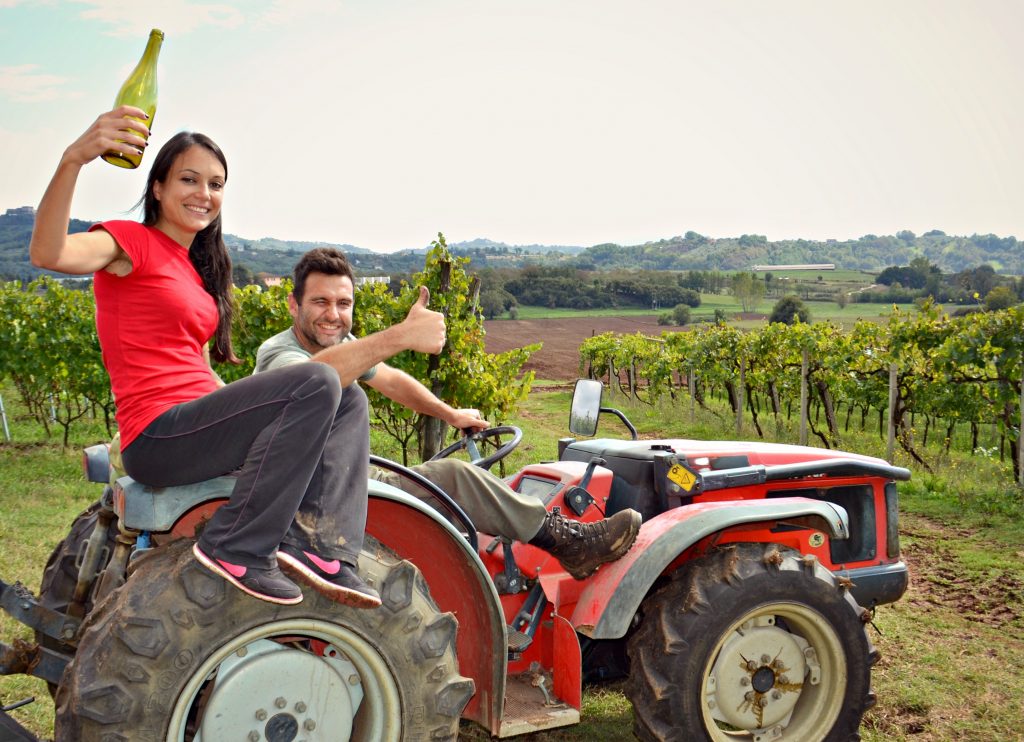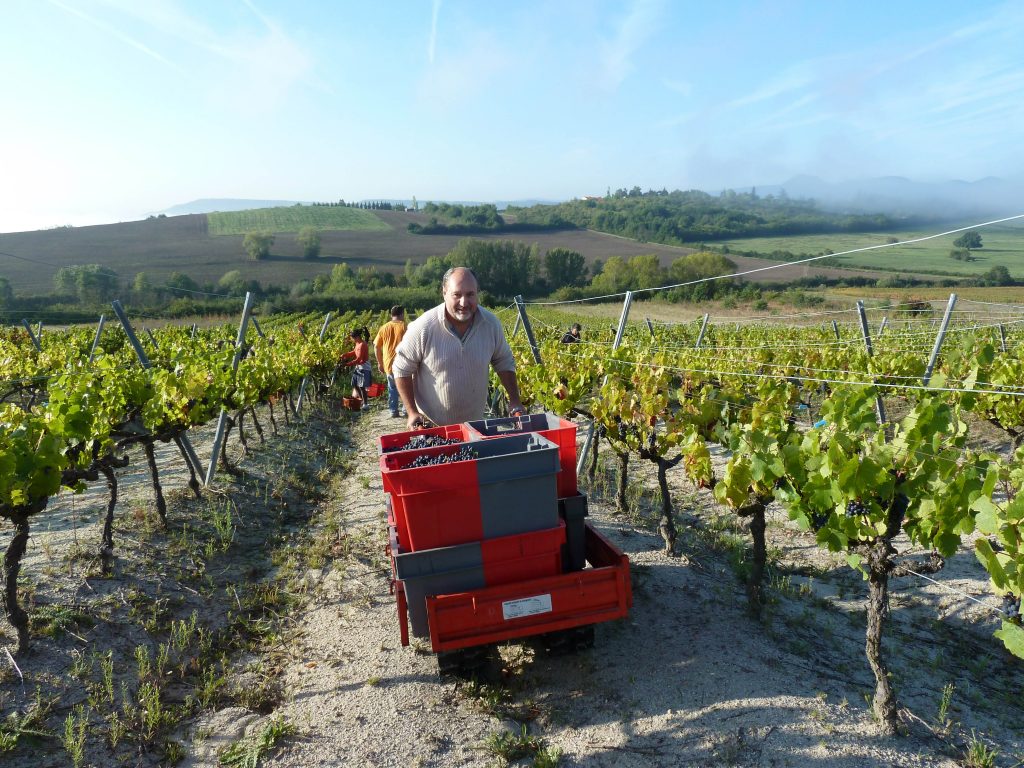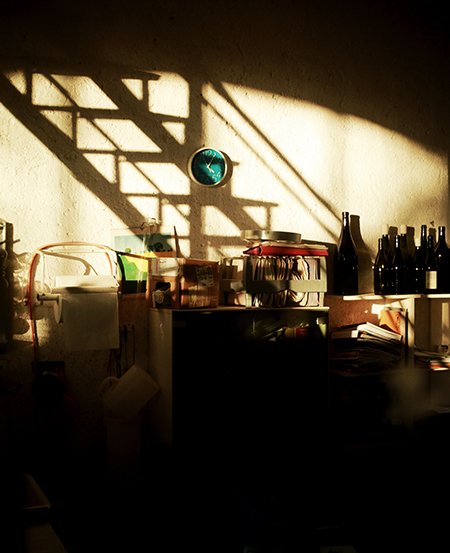In the Beginning Was the Word…
… And the word was natural. And for some the word was good enough in itself. And for the others the word was bad and semantically contradictory and provocative. And it came to pass that people wanted to define the word. And for some people the word was all about the spirit of an endeavour, describing the feeling of accompanying and gently nurturing a wine from the vine to the bottle. Others wanted the word to be part of the vocabulary of a new law, for it was important to them that the word be not taken in vain. And for others still the word in itself was unnatural and the practices that it advocated were also unnatural, for what the word implied could never ipso facto exist.
And it came to pass that many people wanted a brand-new watertight manifesto to put a stop to all the many arguments about the word.
And a manifesto was written and then many other manifestos also posted on forums and web sites, and, in the end, no-one was much the wiser, and the arguments continue to rage about milligrams of sulphur – and without a single milligram of humour or humility – until the protagonists huffily retreated into their respective bunkers insisting that only they were right in their convictions.
These schisms reflect the contrary nature of human beings, the desire to be right, to be original and to have moral ownership of an issue. Here our wine world is somewhat divided into the fanciful poets and the hard-prose realists. The business of definition is always for the purpose of business; demarcating what you call a wine allows it to be placed into a specific commercial category and to be marketed in the trade and amongst the general public as such. For self-appointed guardians of the category, the idea of natural wine represents a kind of chaste purity, and the word “natural” should be the chastity belt that can only be unlocked by a silver key of precise definition. Those that agitate for defined rules justify their campaign by pointing out that any trendy movement will invariably attract its fair sprinkling of frauds, charlatans and interlopers, who will batten onto the natural body in order to reap a commercial benefit. While their presence does not in itself invalidate the good efforts of conscientious vignerons, it does tend to cast a pall over the natural wine brand as a whole. Here, I take a step backwards and disavow myself, as I never use the word “brand”, in anything other than an ironic context, but will accept that the actions of a few may well diminish the probity of the many.
To prevent natural wine being diluted as a concept, one possible course of action is to create charters, strict codes of practice that every vigneron(ne) regardless of his or her merits and reputation, must submit to. The problem here becomes of exclusion, as charters are based on the idea that one has to belong to a particular group in order to fundamentally validate one’s status. Your motivations for not wanting to have a charter mark may therefore be construed as suspicious. However, if you think that natural wine is a natural way of working with wine, and that you have – say – already uncoupled yourself from appellation because you desire the freedom to work according to your conscience rather than under bureaucratic dictates – then charters are tantamount to more policing, more judgements from unelected panels, more box-ticking, in other words, another kind of conformity. Most vignerons that I talk to are not at all concerned with a natural wine designation and don’t deem it necessary to describe their wines as “natural.” They do what needs to be done to make wine the best way (and least interventionist way for them) that they possibly can. They are not using natural wine as a marketing tool to sell their wines, but if others choose to do so….
Nor is there any substitute for intimate knowledge and an acquaintance with the growers and the wines. Certification and compliance with artificially-derived standards tell you nothing about the wine and who is making it. What we call natural wine is – and always has been – highly subjective – and doubtless slightly arbitrary.
Our judgement is based on an amalgam of evidence and instinct including visits to the estate, observation, talking to the grower/vigneron and asking them questions, examining the technical data provided by them, and, in the end, having an instinctive feeling for what natural wine tastes like. When all this material is processed, there is, by definition, a broad spectrum of natural wines out there, of which some seem obviously “more natural” than others. However, each and every wine must surely be treated on its merits rather than subjected to a one-size-fits-all assessment. In the end, we may well argue about a few milligrams of sulphur here and there, but what matters most is the overall approach to farming and winemaking and how the vigneron treads the delicate line between transforming grapes into wine and altering/superimposing aroma and flavour in order to make the wine safer/homogenous/acceptable to certain palates.
For all this, we may examine the specifics of making wine and identify in which ways natural winemaking is distinctive and therefore deserves to be considered as a discrete category. As mentioned, there are degrees of intervention in every facet of farming and winemaking, which necessarily results in a spectrum of wine styles. The following are more like guidelines rather than actual rules, as the saying goes. We could argue about the minutiae until the mouse appears. So, we won’t!

Farming
The entire winemaking process starts with the land and the nature of the soil. This soil is more than a piece of dirt, it provides the original living theatre for the vines. You can use any old any grapes to make wine, but a real wine comes from a vineyard that has been tended with loving care.
Natural wine must derive from organic viticulture, which entails farming without using chemical fertilisers, herbicides, pesticides, other sprays, and where possible, limiting applications of copper. In certain climates and in certain vintages it is extremely arduous and time-consuming to work organically and biodynamically, and the farmer will have to adopt a more holistic approach, setting up the vineyard in such a way that it becomes as close to a perfectly self-sustaining and efficient natural organism as possible.
In other words, the vineyard is not simply a machine for grape production, but an organism which draws the energy of nature up through the soil and down from the sun, and distributes these vital energies through the vines into the grapes.
Doing without is only a small part of organic farming. The real premise behind natural wine is to find a natural balance which may be achieved through the following proactive (dynamic) viticultural measures:
- Vines flourish in healthy soils which are rich in microorganisms. Promoting health by means of working the soils, sowing cover crops, using biodynamic treatments and so forth.
- Encouraging the vines to develop deep root systems to take up complex nutrients.
- Sensitive and accurate pruning and work in the vines to prevent further problems down the line. Always being responsive and adapting to what the vine/vineyard needs rather than working to the same programme every vintage.
- Fostering biodiversity.
- Employing natural solutions to natural problems.
- Respect and equilibrium – restoring to nature what you take out.
Creating a balanced vineyard involves close observation and affirmative action. A good farmer will be intimately connected to their vineyard and understands that great grapes can only come from a sensitive and reasoned farming approach. With natural farming, it is also possible to work with different parcels in different ways. Some growers, for example, are now experimenting with no-pruning and zero treatments, thereby allowing the vineyard to find its own natural balance. Some winemakers appear to have an emotional/spiritual relationship with the vines; they touch them and they are touched by them and their lives become increasingly governed by the rhythms of the vineyard.
Argument: A natural wine comes to fruition as a result of the best possible interactions between humans and the vineyards they work in and thus bringing to maximum health and phenolic maturity those grapes that form the basis for the wine. Natural farming is better for the soil and for the environment, and the best organic methods result in a more efficient and productive vineyard. The use of chemicals may result in denaturing the soil, killing living organisms and yeasts, destroying bacteria, insects and worms, hobbling the vines, leaching toxins into the water table, as well as damaging the health of vineyard workers.
Natural wine is the life of the soil and the life of the soul of the vineyard.

The Harvest*
Natural wine should come from grapes harvested by hand. Hand harvest is a selection. And a skill. It leads to closer, more tactile vineyard interactions, as well as the clearer understanding of the physiology of grapes.
Tasting the grapes is important. It is fine to take measurements, but to taste is to feel, as well as to imagine the wine in its final state. Instinct is important to natural winemaking, and natural winemaking involves working with all the senses and using one’s experience to arrive at judgements, rather than mediating all work through machinery and computers. Finally, it is important to treat the grapes respectfully, picking undamaged healthy fruit, placing it in small cases so that it is not crushed or bruised.
*You can make an argument that natural wine should allow for machine-harvesting as utensils are made by man and wine is a man-made product. Another argument is that why make it difficult for yourself in the vineyard when easier and quicker technological options are available? Hard work is not romantic, after all. I am talking, nonetheless, about a whole approach to farming and winemaking which is about being in touch with nature and to do with physical endeavour, rather than finding the easiest (i.e. technological) way of making a wine without chemical additions. As one grower said: “I am uncertain on a scientific level what biodynamics achieves in comparison to other forms of farming, but on a personal level, adopting it has made me a much better farmer, more observant of nature, and made me realise that I must understand vines better.”

Winemaking
Winemaking is a series of choices in terms of guiding the fermentation, the evolution and maturation of the grape juice. In natural wine, winemaking is transforming raw material into a product that tastes as natural as is “humanly” possible, in which the interventions have been physical and naturally transformative, where aromas, flavours and textures have not been created or altered by oenological tropes nor chemical additions to the must. There is a difference between chemical interventions (which tend to be about exerting a measure of control and to effect flavour change to a specific end) and physical interventions (racking, topping up etc) which are natural steps in the transformative process and often have uncertain outcomes.
Natural ferments occur using native (also known as ambient or wild) yeasts. In natural winemaking there is no assigned period for a fermentation. Although the fermentation may be wild there will be some controlling factors. Its temperature will depend on the ambient temperature of the winery and the nature of the container/vessel that it takes place in.
The outcome of any winemaking, as we know, depends on a thousand decisions in the vineyard and the winery.
Individually, whereas each decision may only have an infinitesimal effect on the final wine, collectively they knit together to make the wine what it is. “Every time you touch the wine, it moves in a different direction”, as a vigneron once said to me.
There is long list of legal additions to wine must. Rather than itemising every one of the hundred or so chemical additions and oenological processes used to transform, correct or stabilise wine, here is a broad list of what is not allowed in natural winemaking.
No added yeasts
No sugar
No water
No enzymes
No flash pasteurisation
No added colouring agents
No added tannins
No added tartaric acid
No added proteins
No added chemicals or substances to change the mouthfeel
No flavouring agents
No process of deacidification or dealcoholisation
No stabilising gums
No gelatine
No reserve osmosis
No chips, no staves
No strip filtering
Those who would seek to describe or define natural wine would view the above as a minimum standard by which natural vignerons should abide. These additions and manipulations are listed for the very reason that they are not listed on the label of the bottle – to illustrate natural winemaking. Ergo, put simply, the entire premise of natural wine is not adding substances to what is not already there, and not subtracting from what is already present. Simpler still, nowt put in; nowt taken out.
Does this mean that the winemaking is a no-intervention process? By no means, as there are so many decisions to be made and elements of winemaking that necessarily shape the grape juice into a final product.
One might put it thus: the grapes are the original genetic material and natural predisposition, whereas the winemaking is the upbringing and moulding into a complex representation of the grapes’ potential.
Natural winemaking is just… winemaking. But a different approach. Or once more with feeling! Perhaps being less recipe-driven and less geared towards a consistent end-product, it is less about driving the grapes into a wine that reminds you of the wine the year before and the year before that, and more about working with what you have in front of you. You could call it lo-fi or low-intervention. Natural winemaking is the means to the end and not the end in itself. Its winemakers tend to prefer to be referred to as vignerons. The notion of creating wine is an alien one (nothing can come of nothing); they prefer to see themselves as enablers or midwives within the process.
We never deny the human element, of course. Two different vignerons can make completely different natural wines from grapes harvested on the same day from the same vineyard. The personality of the vigneron is part of the natural process. This is the least understood element of natural wine and puzzles literalists who think that natural means wine made by nature and sans human intervention.
When does winemaking tip over into imposition? Natural winemaking, as we have said, is not seeking to add or subtract flavours during the transformation of grape juice into wine. The nature of the wine, however, will be affected by the nature of the physical intervention (or even lack of intervention). Stuff happens. Length of maceration, for example, determines the colour and phenolic texture of the wine (plus punch downs and pump overs). The use of oxygen is crucial, the effect of batonnage and lees-ageing, temperature control and filtering. The very vessel itself plays a role in the flavour and the texture of the wine. And, of course, there is the addition of sulphur, at what juncture, the quantity used, and the reason for the addition.
On the matter of sulphur which excites way too much debate in the natural wine world, one cannot be too prescriptive or dogmatic. Every natural wine, every wine in its individual barrel or tank, has different needs. Problems may be alleviated or solved by techniques such as blending or racking, or by letting time be the great healer. Not everyone has the luxury of doing nothing though. The application of sulphur dioxide is, after all, a winemaking tool. To make wine without sulphur is to make wine without a safety net. We know it can be done, and we love the sheer brilliance and vitality of zero-sulphur wines, but we also acknowledge that natural wines can be made with the addition of a judicious (reasoned) amount of sulphur.
Too much sulphur is an unpleasant imposition and it’s easy to discern which wines have been over-egged. There is a rough tipping point, and most natural wine aficionados have an idea what the maximum addition should be or the maximum total should read. Judging totals is not absolutely indicator as sulphur is present as a natural by-product of winemaking. As for additions, as a lot of sulphur may be added early in the winemaking process and the readings can turn out low in the final analysis.
When we speak of natural wine and consider flaws, faults and the nature of the liquid, we need to consider the notions of authenticity and “balance.” Balance in wine is perceived harmony, the seamless integration of myriad elements that constitute the wine itself. Take oxidation. When part of the wine, it becomes a wonderful complexing secondary aromatic and textural component. It adds to the wine’s voice. Yet if it dominates the wine, its presence subtracting from other important elements, then it becomes a less desirable component. Oak barrels carry, cradle and nourish a wine, give it shape, allow micro-oxygenation. The quality of the wood, the quality of the toasting is paramount. A new oak barrel will eat a weak wine; another barrel of inferior quality may confer flavours of dirty wood.
If what I am saying is that the tools are an important part in determining the outcome of a natural wine, then that is the case.
Great wine can be emasculated by clumsy intervention.
Natural farming which produces superb grapes can easily be unmade by the work done in the winery. Composed of living elements, wine in its embryonic state is sensitive to intervention. The majority of natural vignerons pledge themselves to preserving its dynamic forces, transmitting the energetic voice of their local vineyards in the bottle.
To be continued…

